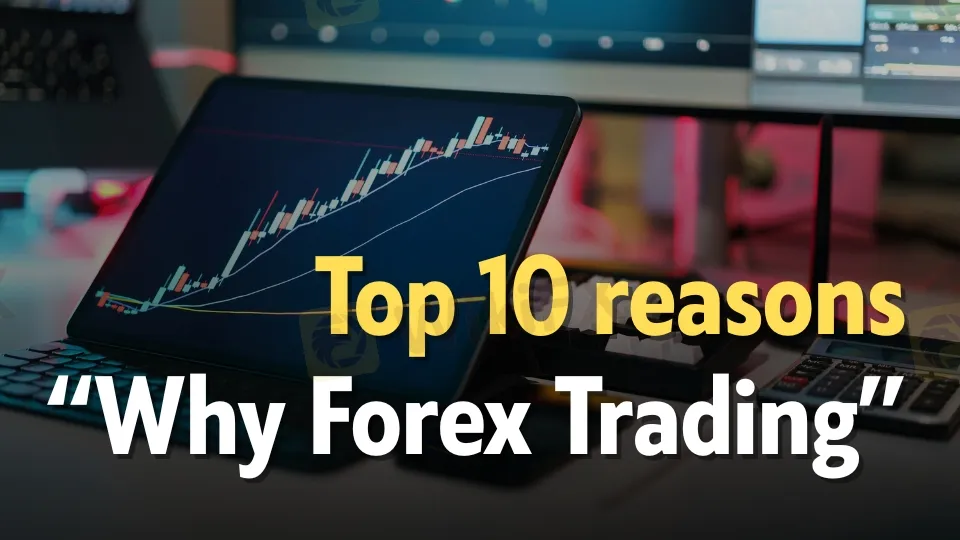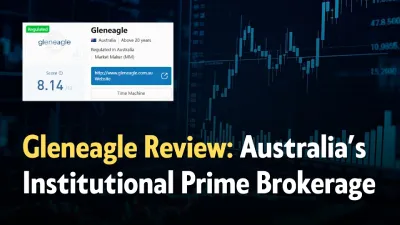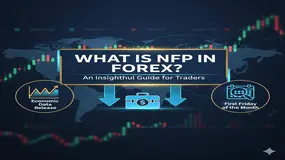Why Forex Trading? Top 10 Reasons to Start Now
Abstract:Forex trading offers 24/5 access, high liquidity, and strategy flexibility for beginners—learn the top benefits, real risks, and how to start safely in 2025.

Introduction
Forex trading is the global exchange of currencies, operating 24 hours a day, five days a week across major financial centers, and its the most liquid market on earth by daily turnover. According to the BIS Triennial Survey, global OTC foreign exchange turnover reached approximately 9.69.69.6 trillion USD per day in April 2025, with FX swaps being the most traded instrument, highlighting both scale and institutional participation that support pricing and execution quality for retail learners. For beginners, the educational appeal is clear: a continuous market, tight spreads in major pairs, and the ability to practice across time zones with demo environments provide a structured pathway to learn macroeconomics, risk control, and trade evaluation without needing large starting capital. At the same time, leverage can magnify small price moves into outsized gains or losses, so any “start now” framing should be rooted in risk-first learning—position sizing, stop-loss discipline, and a gradual transition from demo to live trading under regulated conditions. This article explains why forex attracts new learners in 2025, where the real advantages are, and how to mitigate the biggest risks so that early experiences build skill rather than volatility-driven setbacks.
Definition and core concepts
- Forex is the over-the-counter market where participants trade currency pairs like EUR/USD and USD/JPY, quoted as one currencys value relative to another in a continuous, decentralized network.
- The market runs 24 hours, five days a week, moving through Asia, Europe, and North America sessions, which gives beginners time flexibility to learn when liquidity and volatility differ by session.
- The BIS reports that spot, swaps, forwards, and options collectively make up the market, with FX swaps accounting for the largest share of turnover and the US dollar on one side of the majority of trades, showing deep institutional participation and benchmarks for new traders to study.
Why it matters in education
- Forex connects directly to macroeconomics: central bank policy, inflation prints, and geopolitical events shift currency valuations, making FX a live laboratory for students to test theories with real-time data.
- The BIS‘s 2025 survey confirms FX’s breadth and depth, which makes it a credible venue to learn order types, execution, and market microstructure while observing how institutions dominate flows and set liquidity conditions.
- Because it is open 24/5, learners can build consistent study routines around session characteristics and practice disciplined trade planning without waiting for limited market hours, boosting the cadence of deliberate practice.

Top 10 reasons to start now
1. 24/5 market access
- FX trades continuously through global sessions Monday to Friday, enabling flexible study schedules for beginners, balancing work or school.
- Session overlaps, such as London–New York, often feature tighter spreads and more movement, which can help learners experience clearer price discovery in liquid times.
2. Deep liquidity and tighter spreads
- With global turnover near 9.69.69.6 trillion USD per day in April 2025, FX offers rapid execution and competitive pricing in major pairs, which is advantageous for cost-conscious beginners.
- Liquidity concentrated in major centers like the UK and US supports consistent fills and robust quote depth during core hours, aiding fair-price learning conditions.
3. Low capital thresholds and demos
- Many brokers offer small minimum deposits and free demo accounts, allowing skills development with virtual funds before risking live capital, which is well-suited to a staged learning plan.
- This accessibility lowers financial barriers to entry for beginners and enables repeated practice of setups, risk controls, and journaling habits.
4. Strategy flexibility for every style
- FX accommodates scalping, day, swing, and position trading, allowing learners to align tactics with time availability and temperament for sustainable learning.
- This variety supports iterative experimentation with clear feedback cycles, from minutes to months, as students refine methods.
5. Potential to trade both directions
- Currencies are always quoted in pairs, so the mechanics of going long one currency and short the other normalize bidirectional trading, which helps beginners understand market neutrality.
- This symmetry means a learning plan can include short setups as naturally as long ones, improving conceptual balance and risk awareness.
6. Transparent, macro-driven pricing
- FX pricing reflects global macro developments across many participants—governments, banks, corporates—reducing single-point manipulation risk relative to thin markets and providing a rich context for study.
- BIS breakdowns of instruments and currencies provide empirical baselines learners can reference while exploring volatility regimes and correlations.
7. Massive, up-to-date data for practice
- Regular BIS releases, plus central bank and market calendars, give beginners authoritative data to back-test ideas and build event-driven playbooks.
- Education-focused broker guides also compile foundational terminology and workflows, assisting with structured onboarding.
8. Portfolio and skills diversification
- Learning FX exposes students to cross-asset thinking—rates, commodities, and equities interlink with currencies—broadening financial literacy and adaptability.
- Because FX responds to global cycles, it can complement equity-centric learning by showing how policy differentials and flows impact trends.
9. Technology and tools for learners
- Platforms offer charts, economic calendars, and order types; combined with demo access, these tools create a safe sandbox for process-oriented training before live deployment.
- Educational libraries from reputable providers help bridge the gap from novice to intermediate through structured lessons and glossaries.
10. A credible, research-backed arena
- The BIS Triennial Survey is a gold-standard reference confirming scale, composition, and geographic distribution of FX trading, reinforcing the markets legitimacy for serious study.
- National central banks, such as the Bank of England, publish jurisdiction-level turnover insights, adding transparency for learners investigating market structure.

Key theories and models
- Interest rate parity and central bank policy: Policy rate differentials often anchor medium-term currency trends; learners can map policy paths to directional hypotheses and risk scenarios using BIS and central bank data.
- Market microstructure and session dynamics: Liquidity, spreads, and volatility vary by session; studying London–New York overlaps versus Asia can inform timing, order choice, and expectations of slippage for beginners.
- Volatility and leverage interaction: Leverage magnifies profit and loss; understanding how small pip moves compound under different leverage settings is foundational to survivability.
Real-world beginner pathways
- Start with demos: Practice trade entries, exits, and journaling across sessions to internalize platform mechanics before risking capital, building a habit of evaluating expectancy and drawdowns.
- Risk-first progression: Transition to small live positions with tight risk per trade and predefined maximum daily loss, focusing on process metrics, not profits, to avoid leverage-driven setbacks.
- Event playbooks: Use authoritative calendars and BIS context to plan for volatility around macro releases, evaluating slippage, spreads, and position sizing under news conditions.
Essential benefits, clearly framed
- Liquidity and pricing: High turnover supports efficient execution and tight spreads in majors, which helps contain trading costs during the learning phase.
- Flexibility and frequency: 24/5 hours and diverse strategies create frequent, lower-stakes practice opportunities that accelerate feedback and skill acquisition.
- Structured education: Abundant reputable resources and demos enable scaffolded learning from vocabulary to advanced tactics without immediate financial pressure.
The risks beginners must manage
- Leverage amplification: Even a 0.5–1% adverse move can severely impact a small, highly leveraged account, leading to margin calls or rapid drawdowns without strict controls.
- Volatility and slippage: Fast markets and low-liquidity sessions can cause worse-than-expected fills; beginners should test different sessions and employ stop-losses sized to volatility.
- Overtrading and psychology: Easy access plus leverage often nudges excessive trade frequency; process goals and pre-trade checklists help curb impulsive entries.
Regulation and safe practice
- Regulators cap retail leverage in many regions to reduce blow-up risk, reinforcing the need to treat leverage as a tool, not a shortcut, especially in early stages.
- Reputable institutions like the BIS and major central banks provide neutral, high-quality data that learners can use to benchmark market conditions and validate assumptions.
How to start responsibly in 2025
- Build fundamentals: Study broker education libraries, master order types, and practice risk metrics like position sizing and maximum adverse excursion in a demo for several weeks.
- Define rules: Limit risk per trade, cap daily loss, and focus on one or two liquid pairs during peak hours to learn with tighter spreads and clearer price action.
- Measure outcomes: Track expectancy, win/loss distribution, and drawdowns; only scale size after demonstrating consistency over a statistically meaningful sample.
Case study: session-based learning
- A beginner focusing on EUR/USD during the London–New York overlap experiences tighter spreads and faster fills, aiding cleaner execution and clearer feedback on strategy edge.
- Incorporating scheduled news events into a playbook allows pre-positioning or standing aside, reducing random entries and improving post-trade analysis quality.
Frequently asked beginner questions
- How much to start? Many brokers allow small deposits and provide demo accounts; the educational priority is skill and risk control, not account size.
- Which pairs? Majors like EUR/USD and USD/JPY often have deep liquidity and narrower spreads, which can help beginners manage costs and reduce noise.
- Is it profitable? FX has real potential, but outcomes hinge on edge development, risk discipline, and avoiding leverage misuse; education-first paths improve odds of durability.
Final insights
Forex trading is a powerful educational pathway thanks to its 24/5 access, deep liquidity, and breadth of strategies, but the very features that make it attractive—frequent movement and available leverage—require a deliberate, risk-first plan to avoid early blow-ups. Anchoring learning in reputable sources such as the BIS and central banks, practicing extensively in demos, and progressing with strict risk rules provides beginners the best chance to develop durable skills and evaluate whether live FX trading suits their goals in 2025 and beyond.

Read more

Gleneagle Review: AU Institutional Prime Brokerage
Australian institutional prime brokerage review of Gleneagle: leverage, custody, execution, and capital solutions under AFSL 337985 for wholesale investors.

FCA Warning List – October 2025
The Financial Conduct Authority (FCA) in the UK has published the FCA Warning List- October 2025, alerting forex traders and investors about unauthorized brokers. These firms are operating without the necessary FCA approval. To safeguard your funds and avoid scams, be sure to check the full warning list below.

BotBro Chief Lavish Chaudhary to be Behind Bars Soon? Here’s the Inside Story!
The attempts to bring back Lavish Chaudhary alias “Nawab”, who has been accused of a large forex trading fraud across five states, to India have intensified. The issuance of an Interpol order signals the imminent arrest of the BotBro owner. As per news reports, Nawab is operating from Abu Dhabi along with many of his associates. He also owns the Abu Dhabi Cricket-10 team and is allegedly driving forex trading operations across different countries.

What is NFP in Forex? An Insightful Guide for Traders
The Non-farm Payroll (NFP) report may be for the US. However, the report, which is issued every month, impacts the forex market globally. The monthly report estimates the number of jobs gained in the US in the previous month. The job numbers stated on this report exclude those of farms, private households, and non-profit organizations. Usually released on the first Friday of the month, the report also includes the US unemployment rate, average hourly earnings, and participation rate. In this article, we have answered the question - what is NFP in forex - and shared other pertinent details. Read on!
WikiFX Broker
Latest News
Trading While Traveling – Is It Possible? Digital Nomad Traders Are Making It Reality
The Offshore vs. Onshore Broker Dilemma: Who Can You Really Trust?
FBS Added AI tool for Rapid Forex Insights
Axiory Review Alert: What Traders Must Know
Do Content Creators Need a “License”? A Plain-English Guide to the Finfluencer Idea
XM Revamps Trading Platform with AI
Malaysia Investor Alert List is Out! Check the list to Avoid Scam
BotBro Chief Lavish Chaudhary to be Behind Bars Soon? Here’s the Inside Story!
Top Forex Regulatory Bodies You Need to Know
Think Your Broker is Safe? 5 Secrets Only WikiFX Can Uncover
Rate Calc

